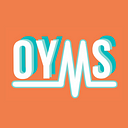A Complete Guide to uOttawa Health Sciences
Learn about everything from prerequisites to first year courses, research opportunities, career options, and more!
Interested in a career in medicine, research, or public health? Then the Health Sciences program at the University of Ottawa may be a great fit for you! With courses ranging from human anatomy to principles of sociology, this program takes a holistic view of human health, exposing students to both the basic sciences as well as the social aspects.
Based on anecdotal evidence, the class size is about 200 to 300 students.
In addition, a very unique aspect of this program is the fact that it’s offered in both English and French, depending on which stream you choose.
Now let’s dive deeper into the program!
What Courses Will I Take?
As mentioned above, this program takes an interdisciplinary approach to health sciences, making sure to expose students to both the core sciences (like biology and chemistry) as well as “social and environmental determinants of health”.
In action, this means students take a wide range of interesting courses and have many electives too.
Here’s a list of the courses you’re required to take in first year (I’ve added the labels of “science” and “social/other” to help you see the distribution of course types):
- Human Anatomy and Physiology I (science)
- Human Anatomy and Physiology II (science)
- Introduction to Cell and Molecular Biology (science)
- Principles of Chemistry (science)
- Workshop in Essay Writing (social/other)
- Microbiology and Immunology (science)
- Determinants of Health (social/other)
- Introduction to Psychology: Foundations (science)
- Principles of Sociology (social/other)
Specializing: Program Options
On top of the great Health Sciences program, students are able to dive deeper into their interests by choosing to pursue program options.
The Health Sciences program offers three of these options:
- Population and Public Health
- Technologies and Innovation
- Integrative Health Biosciences
But what does this mean? Each of these options offers students a way to explore specific subfields of health sciences by adding additional required courses they may take. For instance, students choosing to partake in the “Population and Public Health” program option must take the following four courses, on top of the required Health Sciences courses:
- Global Citizenship and Health
- Disease Prevention and Health Promotion
- Population and Public Health
- International Health
Prerequisites
By now, you may be thinking “This is a great program for me! How do I apply?” As is the case with all Ontario universities, you’ll be applying through the Ontario Universities’ Application Centre (OUAC). To gain admission, you need to be taking or plan on taking the following courses:
- English 4U or Français 4U
- Biology 4U
- Chemistry 4U
- One of the following: Advanced Functions 4U, Calculus and Vectors 4U, Physics 4U
You also require an average of low to mid 80s.
Research & Clinical Experience Opportunities
Outside of traditional classes, this program and UOttawa as a whole have great opportunities for students to get involved in both research and the clinic.
On the research side, UOttawa has the Undergraduate Research Opportunities Program (UROP). Second and third-year students are paired with UOttawa faculty members and participate in research internships. Plus, students are awarded $1000 for participating in the program and helping out with a research project.
On the clinical side, students are able to participate in the coop program and get experience in Ottawa hospitals and interact with doctors and patients.
Future Career Paths
There are a lot of different careers you can pursue after Health Sciences at UOttawa! Some of these include medicine, dentistry, epidemiology, pharmacy, and research.
For those interested specifically in medicine, this program includes 80% of medical school prerequisite courses in its required courses. You also have enough electives to ensure you take the remainder of the necessary courses.
The possibilities are nearly endless. Good luck!
About the Author
Parmin Sedigh is a 16-year-old stem cell and science communications enthusiast as well as a student researcher, based in Kingston, ON. She’s currently the VP of Communications at Eye Hope Canada. You can usually find her on her computer following her curiosity. Connect with her on LinkedIn.
